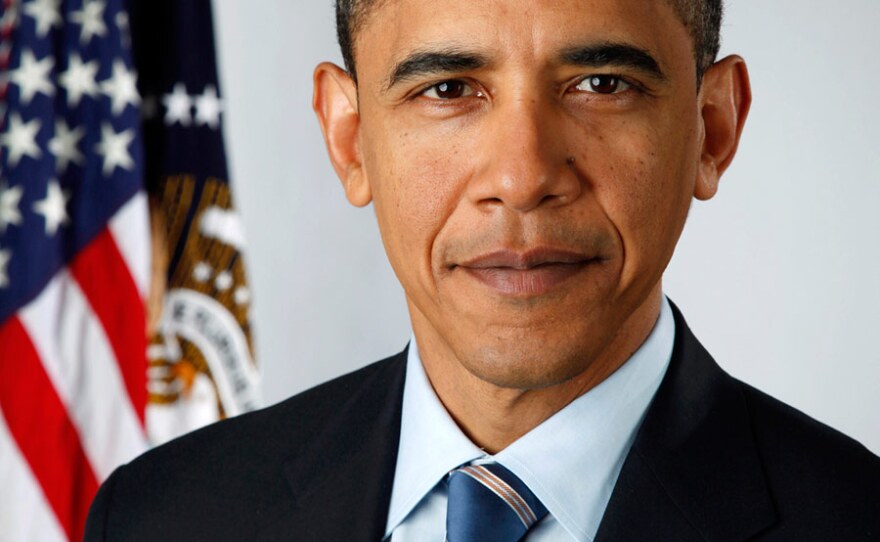On the eve of the second inauguration of Barack Obama, FRONTLINE takes a penetrating look at his first term. "Inside Obama’s Presidency" goes behind closed doors to examine the first four years of the Obama administration and the decisions that led to health care reform, the expanded drone war, the economic stimulus package, and the failure to compromise with Congress that created the fiscal cliff crisis. "Inside Obama’s Presidency" is an unflinching view of the sometimes painful political realities of governing in modern-day Washington.

Interviews: Obama’s First Four Years
Explore FRONTLINE's rich archive of interviews with the senior members of Obama's administration and the people who know him best.
FRONTLINE Coverage of President Obama
Over the last four years, FRONTLINE has covered the battles, promises, successes and failures of Barack Obama’s White House, as well as the personal and political biography of the man himself. Explore more with this collection of films exploring the key stories from Obama’s first term.
Connect with FRONTLINE
Past episodes of FRONTLINE are available for online viewing. FRONTLINE is on Facebook, and follow @frontlinepbs on Twitter.
When Barack Obama won the presidency in 2008, he was confronted by a daunting list of challenges: a collapsing economy, two wars, the pursuit of Al Qaeda, and his own promise to fix the bitter partisanship that plagued and divided Washington.
The battle lines were drawn early. On the night of the inaugural balls, a group of Republican luminaries including Eric Cantor, Paul Ryan and Newt Gingrich met quietly at a Washington steakhouse to lick their wounds and ultimately create the outline of a plan for how to deal with the incoming administration.
“They walked into that dining room, the Caucus Room, as depressed as I’ve seen any elected members of Congress,” says one participant, Republican consultant Frank Luntz. “And they walked out feeling like there was a purpose for them.”
It took only days for the battle to begin. The president had prepared an $800 billion stimulus package designed to kick-start the struggling economy. He took the unusual step of personally delivering the package to a meeting of Republicans on Capitol Hill. But the meeting did not go well.
“It was a very strong signal that we were not going to get a lot of cooperation on this issue,” senior Obama aide David Axelrod tells FRONTLINE. “And if we weren’t going to get it on this issue, it was doubtful we would get it on many others.”
"Inside Obama’s Presidency" tells the behind-the-scenes story of how the president decided to move forward on major health care reform despite growing Republican opposition and against the advice of many of his top advisers. “I said if you’re going to do this, go into it eyes open. Know what the consequences are and what the potentiality for success is,” says former Chief of Staff Rahm Emanuel.
It took almost a year for health care reform to pass, and it came at a great political cost. Meanwhile, the new president was struggling with a host of other issues, including the growing Tea Party movement, a groundswell of anger at the government bailouts of Wall Street, and an expanding secret war against terrorist networks.
By 2011, Obama confronted a new problem: a Republican-controlled House of Representatives that was threatening to vote against a debt ceiling increase. The president was warned that the country could default, with catastrophic consequences.
But Obama and House Speaker John Boehner believed they could agree on a Grand Bargain that would stave off default, fix the country’s finances, and prove that bipartisanship was still possible.
Former Chief of Staff William Daley tells FRONTLINE, “It's not every day that the speaker comes to see the president and says quietly, ‘I'm willing to do a deal that everybody knows is going to be dangerous for him politically.’” When the Grand Bargain fell apart, Obama was furious. “The president was pretty ticked. We were all pretty ticked,” Daley says.
The deal’s failure created a new problem: the fiscal cliff. Close advisers say it served as a reality check for the president. He came into office promising change, but returned to the campaign trail a changed leader.
Drawing on FRONTLINE’s rich archive of films and hundreds of interviews, "Inside Obama’s Presidency" serves as an intimate look at the president’s first term and offers a revealing glimpse into his final four years in office.
The film is produced by veteran FRONTLINE producer Michael Kirk and the award-winning investigative team that delivered "The Choice 2012," two hours of the epic economy miniseries "Money, Power and Wall Street" (2012), "The Anthrax Files" (2011) and "Obama’s Deal" (2010).
Watch Inside Obama's Presidency on PBS. See more from FRONTLINE.





